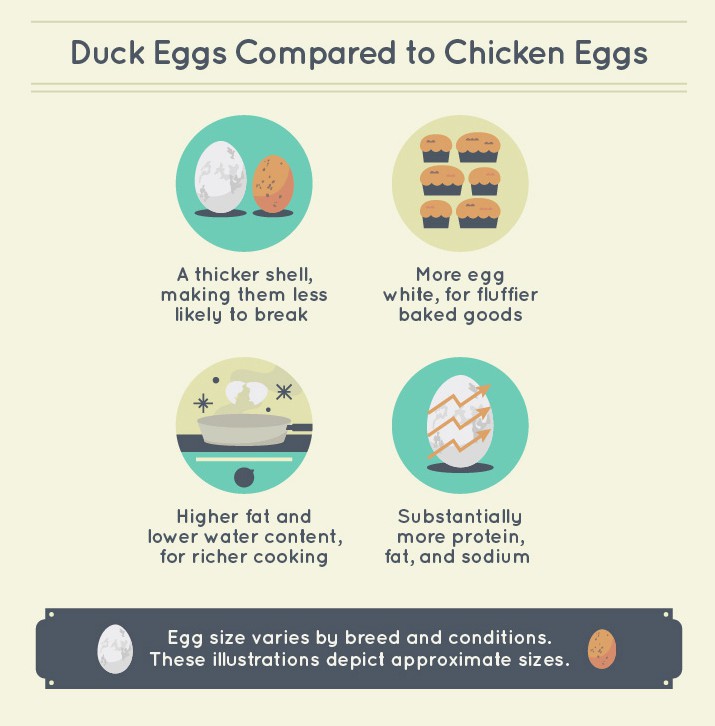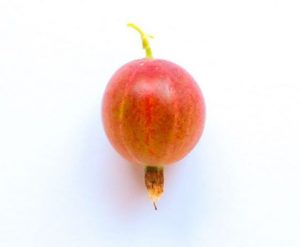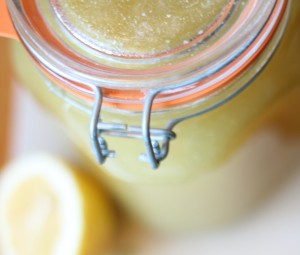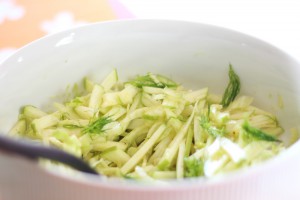Raising Chickens and Ducks Infographic
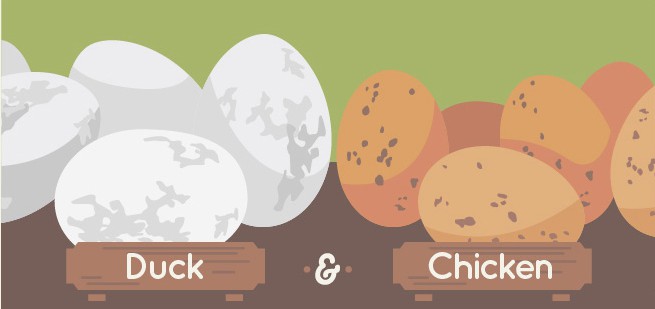
We got this great article on how Raising Chickens and Ducks sent to us and since nothing is more about food than making your own we thought we share this with you. Along with the article there is a great Raising Chickens and Ducks Infographic at the bottom of the post. You can click it to enlarge and it will give all the basics on raising chickens and ducks. Enjoy the read, Ateriet.
Raising Chickens and Ducks With Old-Style Ingenuity and DIY Hacks
We’ve only recently become separated from our food sources. Until a few generations ago millions of people lived on farms. Millions more grew vegetables and raised an animal or two in city lots. Those who didn’t were still connected to what they consumed. They had to be: There were few choices other than milk, eggs, meat, and produce
Now we’re learning what our great-grandparents knew to be true: Growing food locally helps communities directly maintain autonomy, cultural integrity, and environmental stewardship.
An important step is bringing back neighborhood livestock. There are logistical and legal issues to solve such as zoning restrictions, nuisance laws, and noise ordinances. But it’s time to re-envision our neighborhoods as including more than our human neighbors. Here are a few helpful tips and convincing reasons to raise the least complicated livestock: chicken and ducks.
Chickens vs. Ducks: Which Is Best for You?
Raising backyard chickens and ducks is increasingly common. More and more urban areas are making it legal to raise backyard poultry, including Chicago, Ann Arbor, Los Angeles, Cleveland, Ft. Collins, and South Portland, Maine. It’s downright meditative to sit out back and watch chickens peck and cluck and amusing to watch the antics of ducks. These may be reason enough to add them to your life. But there’s nothing like harvesting fresh eggs. But before you take on a flock of your own, make sure to check city ordinances.
Backyard Chicken and Duck Hacks
Coop Hacks
Use repurposed parts
There are two standard options for housing chickens. One is a stationary coop. The other is a moveable coop, commonly called a chicken tractor, which can be situated in different places around the yard. Both types have roosts (necessary for chickens, but not ducks) and nesting boxes, and most have a fenced-in pen attached. Stationary and moveable coops can be made from repurposed partssuch as old sheds, cable spools, and doghouses.
Set up a temporary pen
If your birds aren’t able to range freely in your yard you may want to set up a temporary pen as well. Such pens are great to move into garden areas before you plant and after you’ve harvested so your poultry can enjoy eating insects and plant waste while aerating the soil as they scratch. A temporary pen is also a good way to let them do the weeding for you in hard-to-weed areas. And giving them access to different parts of the yard keeps them from denuding your grass.
One approach to temporary pens is to make poultry tunnels. To create the tunnels, loop chicken wire or hardware cloth into tunnels temporarily staked into the ground.
There’s no limit to how cheaply you can make chicken and duck pens. You can use cable ties to surround an old plastic patio table with chicken wire for a lightweight, shaded, easily moveablegrazing pen. An equally ingenious and much larger moveable pen can be made from a trampoline frame.
Use a plastic baby pool
Ducks can be raised without a pond but need a reasonably large container of water so they can dip their heads in to take a drink and rinse their eyes. They also need to splash water across their backs to activate an oil gland that waterproofs their feathers. They prefer a container with enough room to climb in and paddle around a bit. Fill a plastic baby pool or low washtub, and rinse regularly to keep it clean.
Feeding Hacks
Set up grazing frames
When you have limited space, another way to give chickens access to fresh forage is to set up grazing frames. (Ducks may enjoy them too.) These are basically boxed gardens for your poultry. You simply grow grass, lettuces, herbs, or other plants. Then cover the grazing frame with chicken wire, weighted or tied down at the sides so the chickens can eat the tops of the plants but can’t reach the soil to uproot them. (Read My Chicken Scratch shows how to build a simple covered frame.) Remember, you can use almost anything that can hold soil and be covered with wire or netting. You can even repurpose a child’s sandbox or wheel rims.
Make a DIY waterer
To cut down on starting costs, put together as much as you can without resorting to pricey accouterments. Instead of buying a waterer, consider making one. You can make a waterer from aglass canning jar and a glass dish, a nifty rail-mounted automatic waterer, or a mess free waterer from PVC pipe and a bucket that fills outside the fence.
Keep in mind that most chicken waterers cannot be used with ducks because duck bills don’t fit into the small spaces chicken beaks can. For ducks, you can modify a five-gallon poultry waterer or set up a reservoir with a float valve to help keep the water clean.
Create a DIY chicken feeder
Instead of buying a feeder, build a feeder out of PVC piping, wood, or a 5-gallon pail. Remember, ducks need a wider opening to reach their food.
Feed on the cheap
There are all sorts of ways to feed your chickens and ducks frugally. Consider allowing them to scratch in the compost pile and keep a vermicomposter in order to add more high-protein worms to their diets. You can also sprout grains, which will turn one pound of barley seeds into 4.3 pounds of fodder in one week. Fresh Eggs Daily offers all sorts of ideas for a more varied poultry diet, plus a list of safe and unsafe foods.
Ducks use their beaks as shovels to get at weeds and insects, but they don’t scratch at the ground as chickens do. That means they do less damage to grass and gardens. Ducks eagerly feast on slugs, snails, and other pests while leaving most garden plants alone (except for lettuces and berries), although their large feet can flatten plants. You can keep the cost of feed down by making sure your ducks have space to forage. They’ll happily dine on insects and weeds, thereby eating less of the commercially prepared duck layer or breeder feed you provide. To supply both chickens and ducks with extra bugs, whip up a DIY solar bug trap.
You can also offer all sorts of kitchen and garden scraps to your ducks, although it’s best to avoid bread, crackers, popcorn, and similar foods. Backyard Chickens offers an extensive list of fruits, vegetables, seeds, and proteins that are good for ducks as well as a list of foods to avoid. While chickens can peck at foods of all sizes, keep in mind that ducks swallow their foods whole, so whatever you share with them should be in small pieces to prevent choking or blocking their digestive tracts.
Conclusion
As we begin to grow more food locally, we are reclaiming the best of old traditions while at the same time incorporating the newest ideas. If you have the time to commit to a backyard coop and flock, consider adding some chickens or ducks for fresh eggs, companionship, and a closer connection to one of your food sources.
If this article has you thinking about raising chickens or ducks on your property, you may be interested in one of these outdoor gardeng gates. — http://www.custommade.com/gallery/custom-gates-fences-railings/
Click to Enlarge Image
Raising Chickens and Ducks With Ingenuity and DIY Hacks
Infographic by CustomMade
